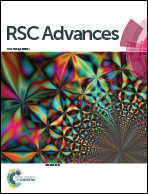Effects of annealing ambient on oxygen vacancies and phase transition temperature of VO2 thin films
Abstract
VO2 thin films are prepared on Si substrates by direct-current (DC) magnetron sputtering at room temperature and annealed in vacuum at different argon pressures. The VO2 thin films annealed in vacuum and in Ar are all polycrystalline with a monoclinic structure; after annealing in Ar, the particle size is reduced compared to the films annealed in vacuum. There are more boundaries for smaller particles; therefore, oxygen can easily diffuse through the boundaries, resulting in more oxygen vacancies. Annealing under Ar further prevents the samples from oxidation. As the Ar pressure increases, the V 2p3/2 peak broadens and shifts to a lower binding energy, implying that there are more oxygen vacancies after annealing. The features in the Raman spectra acquired at room temperature shift to lower frequencies after annealing in Ar, further corroborating the existence of oxygen vacancies in the thin films. Raman scattering and resistance measurements show that the critical temperature of the phase transition from monoclinic to tetragonal is reduced from 341 K to 319 K. This can be ascribed to the weaker hybridization between V 3d and O 2p orbitals as a result of oxygen vacancies. Oxygen vacancies affect the phase transition in VO2 thin films, and the optical and electrical properties as well.


 Please wait while we load your content...
Please wait while we load your content...